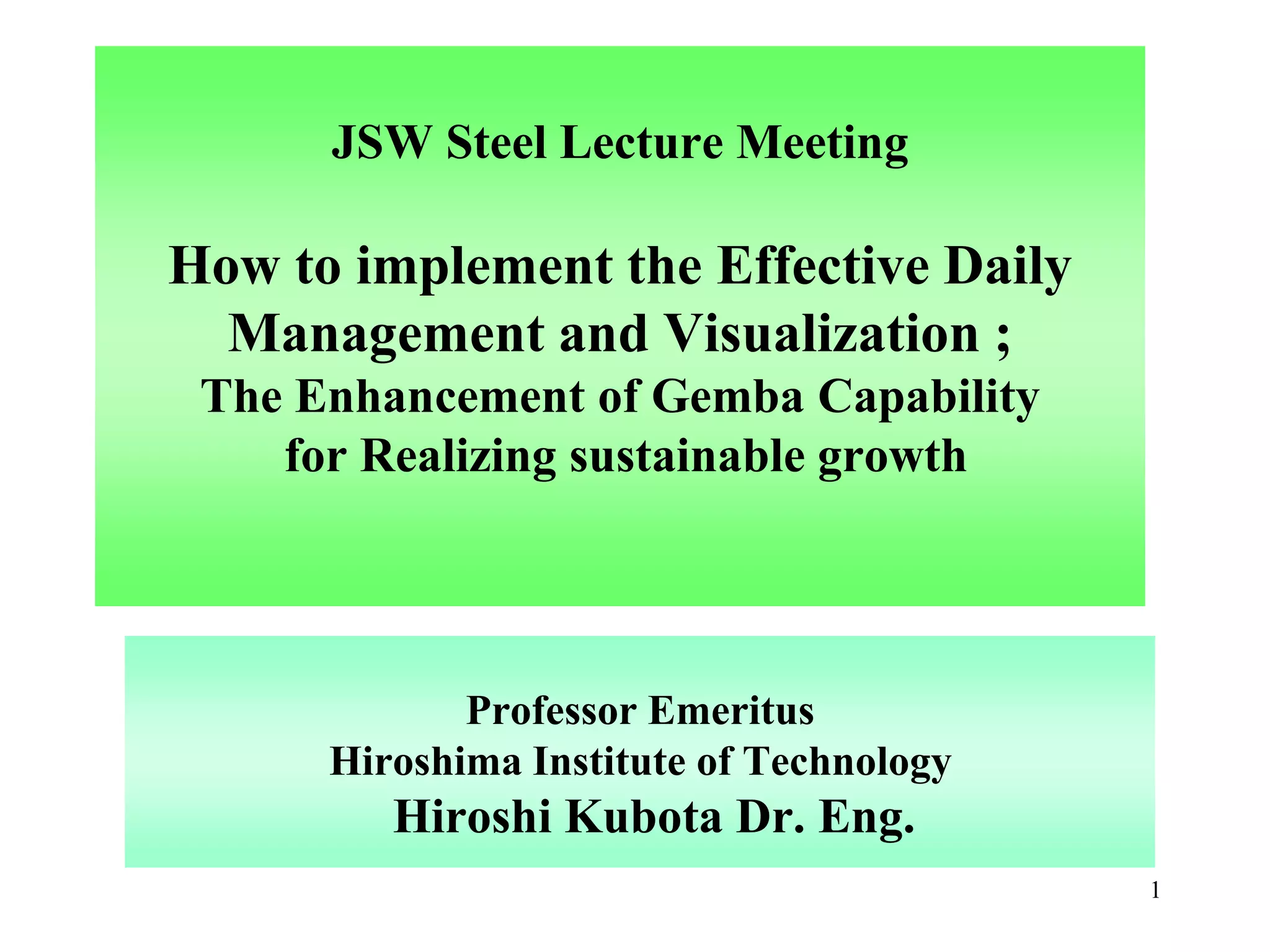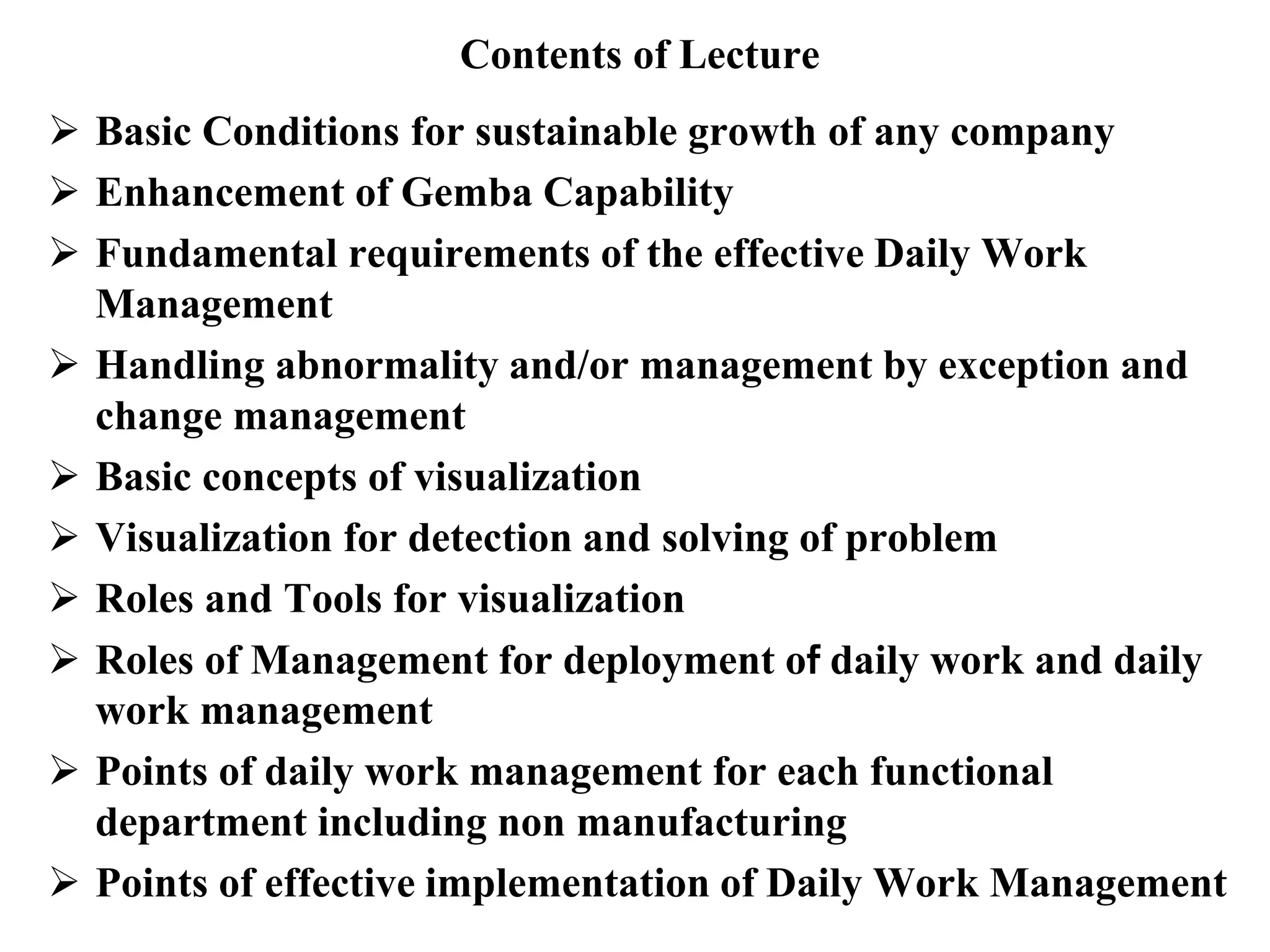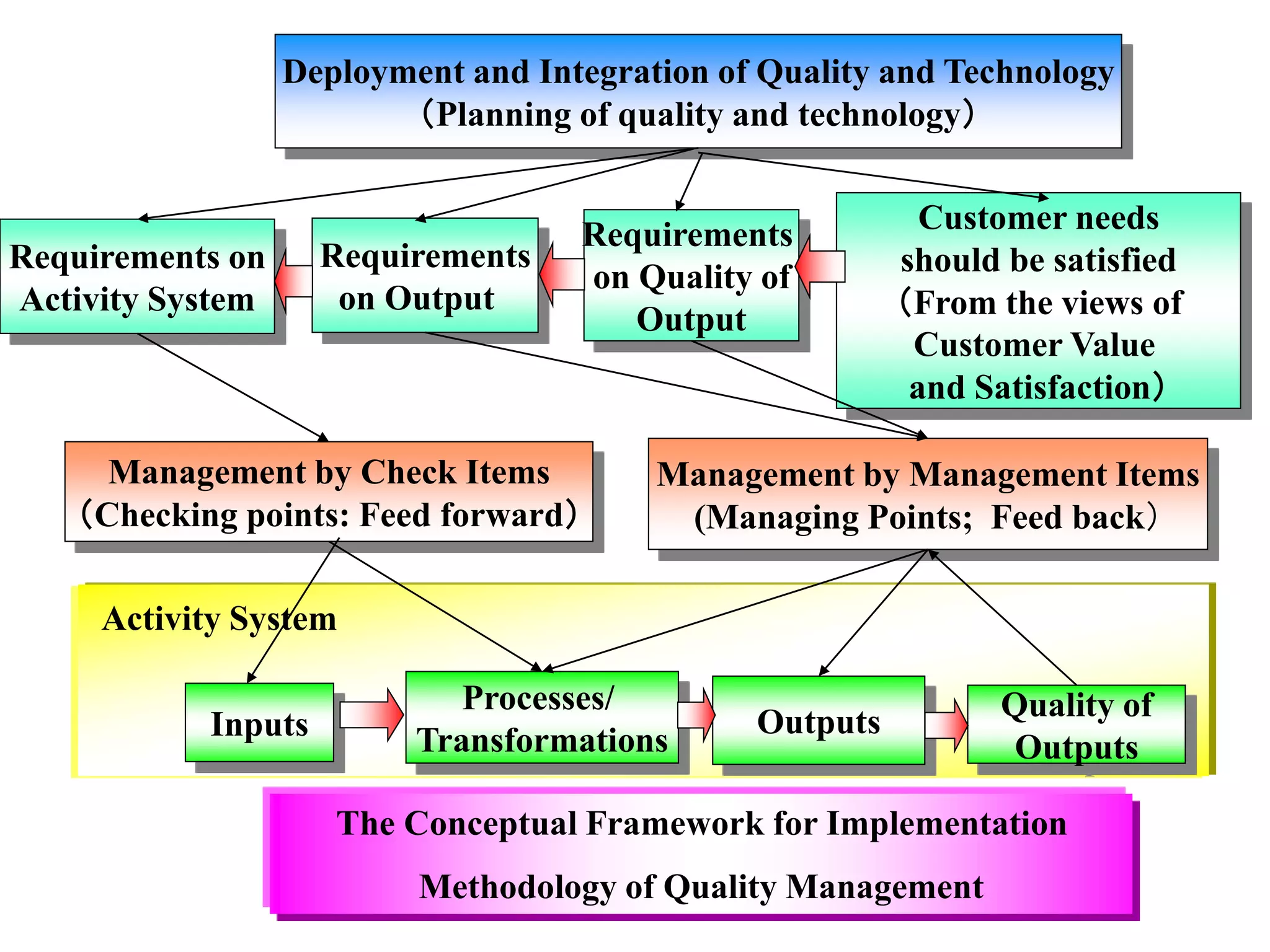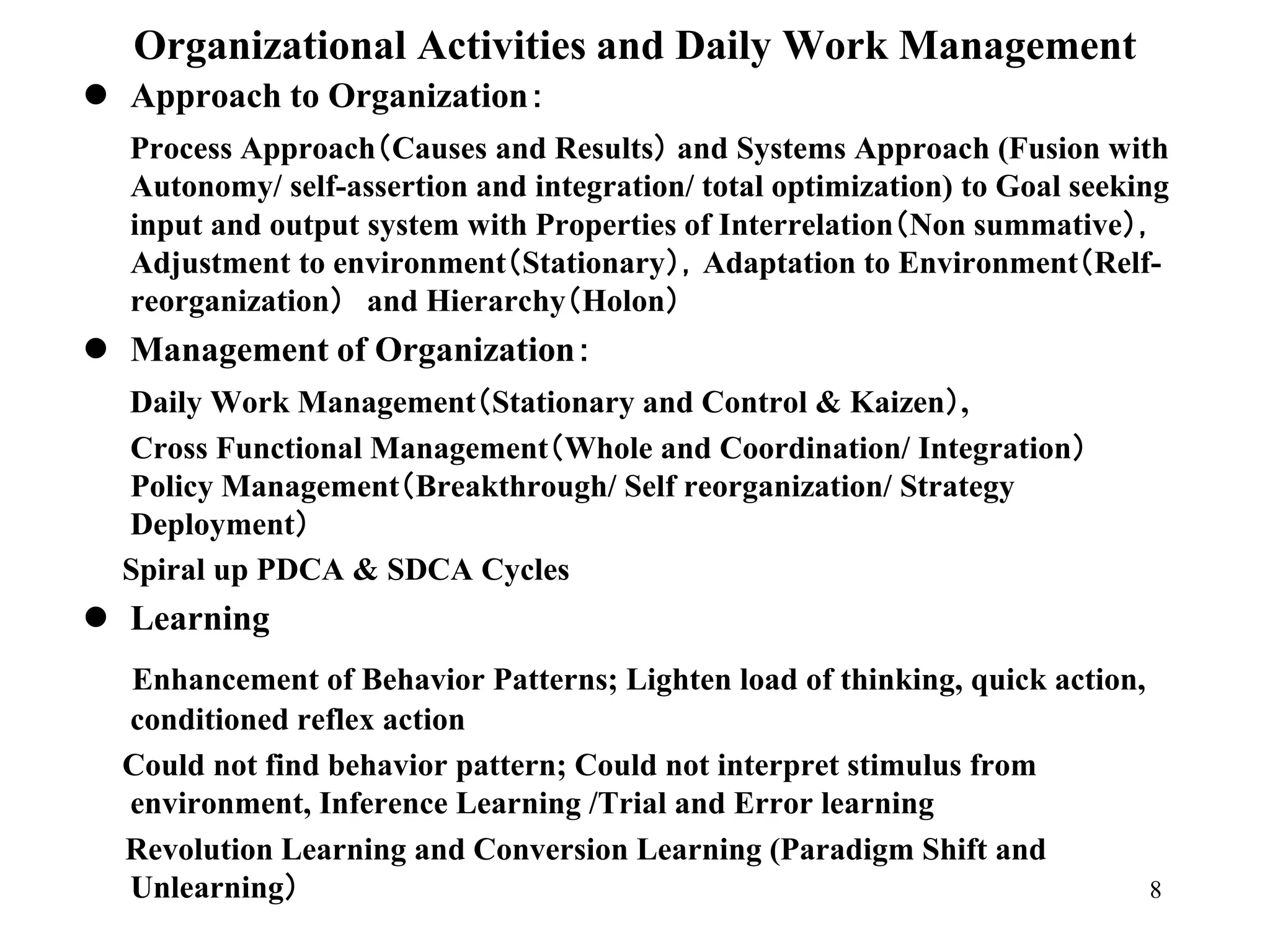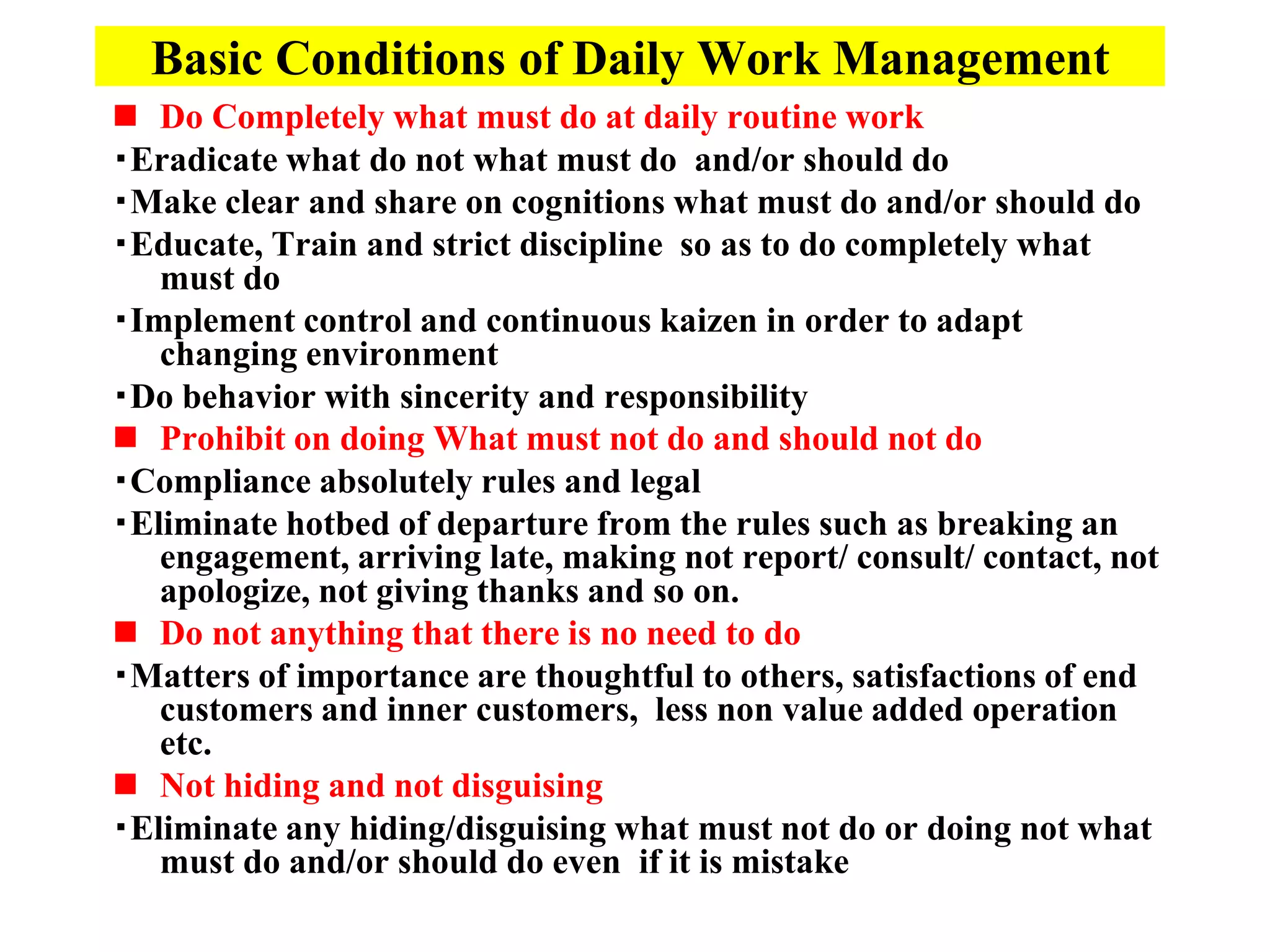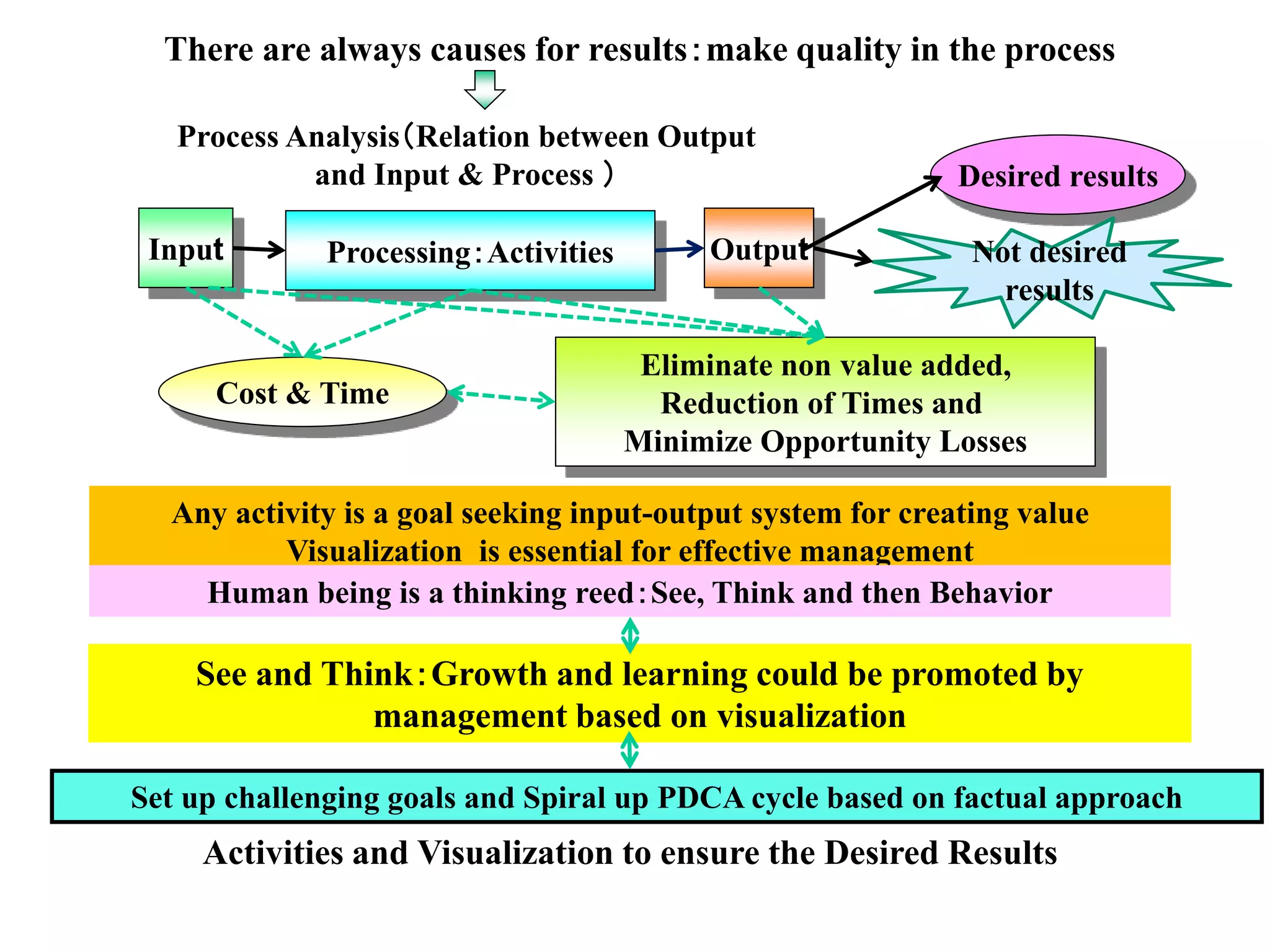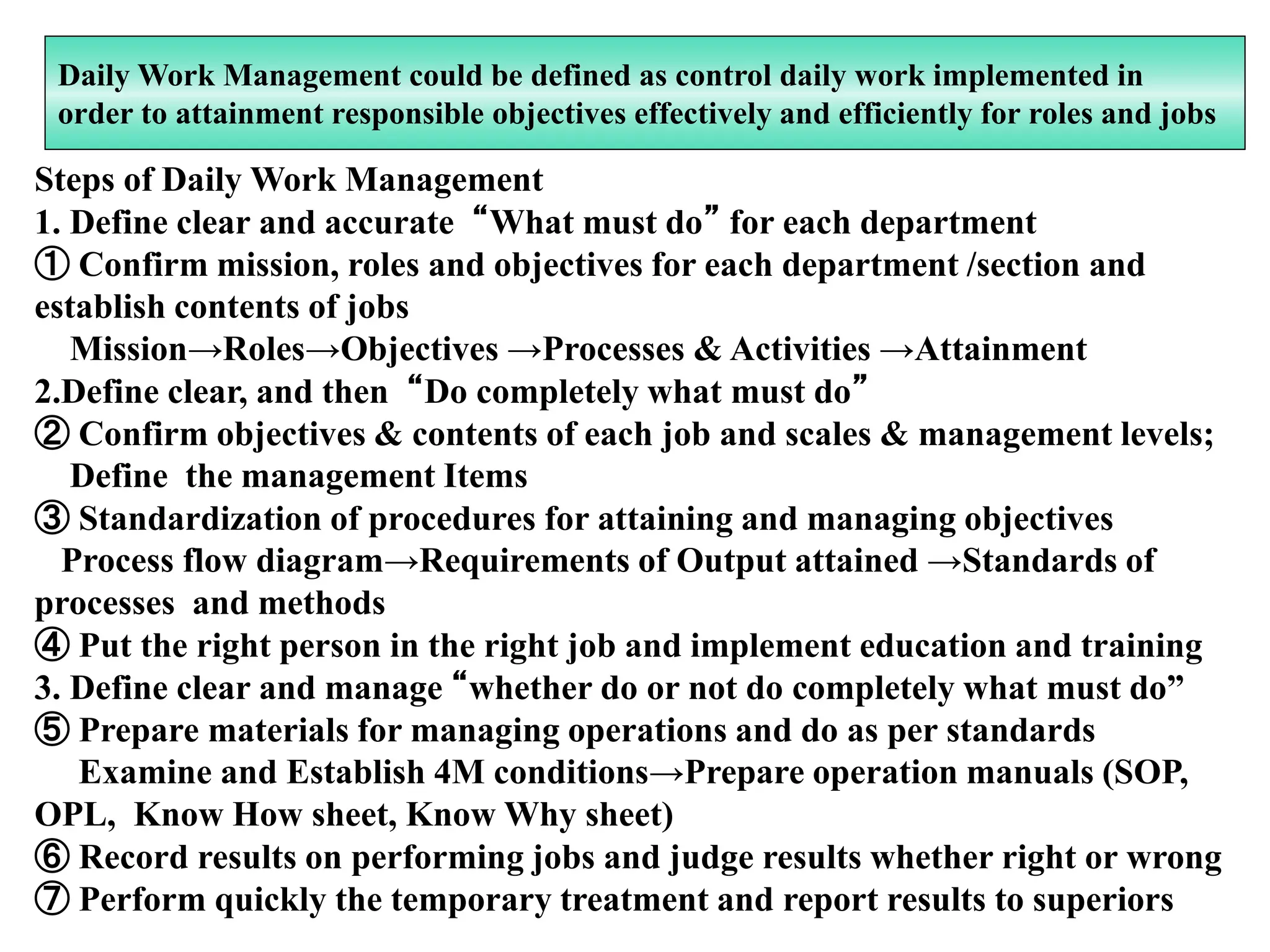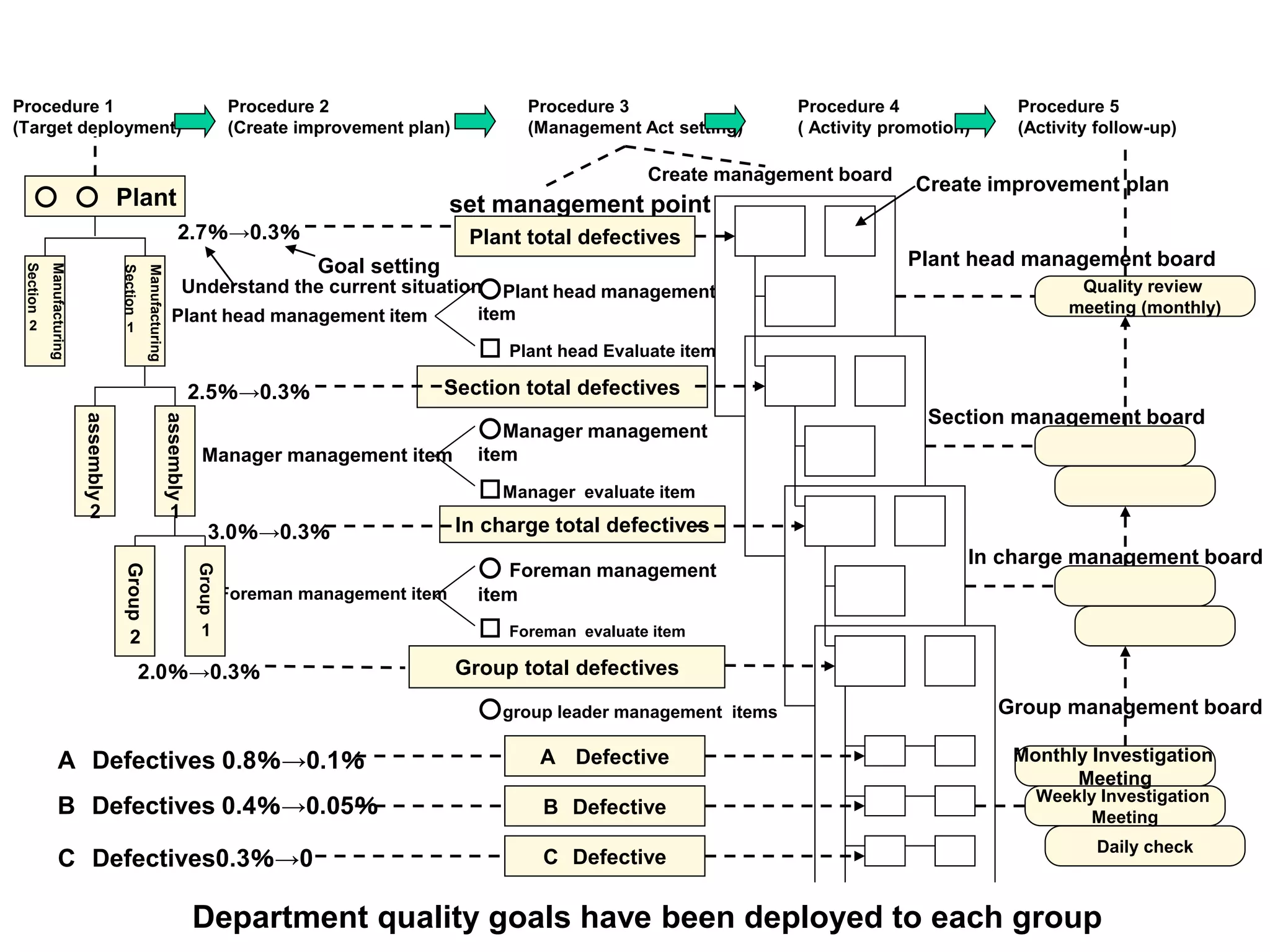This document discusses effective daily management and visualization techniques to realize sustainable growth. It covers:
1. Enhancing gemba capability through complete and continuous improvement of daily work, handling abnormalities, and using visualization tools.
2. The roles of management in deploying daily work management and ensuring it is effectively implemented across all departments, including through standardization, education and addressing non-value-added activities.
3. The steps of daily work management including defining clear roles and objectives for each department, standardizing processes, assigning the right people, and managing performance against standards.
